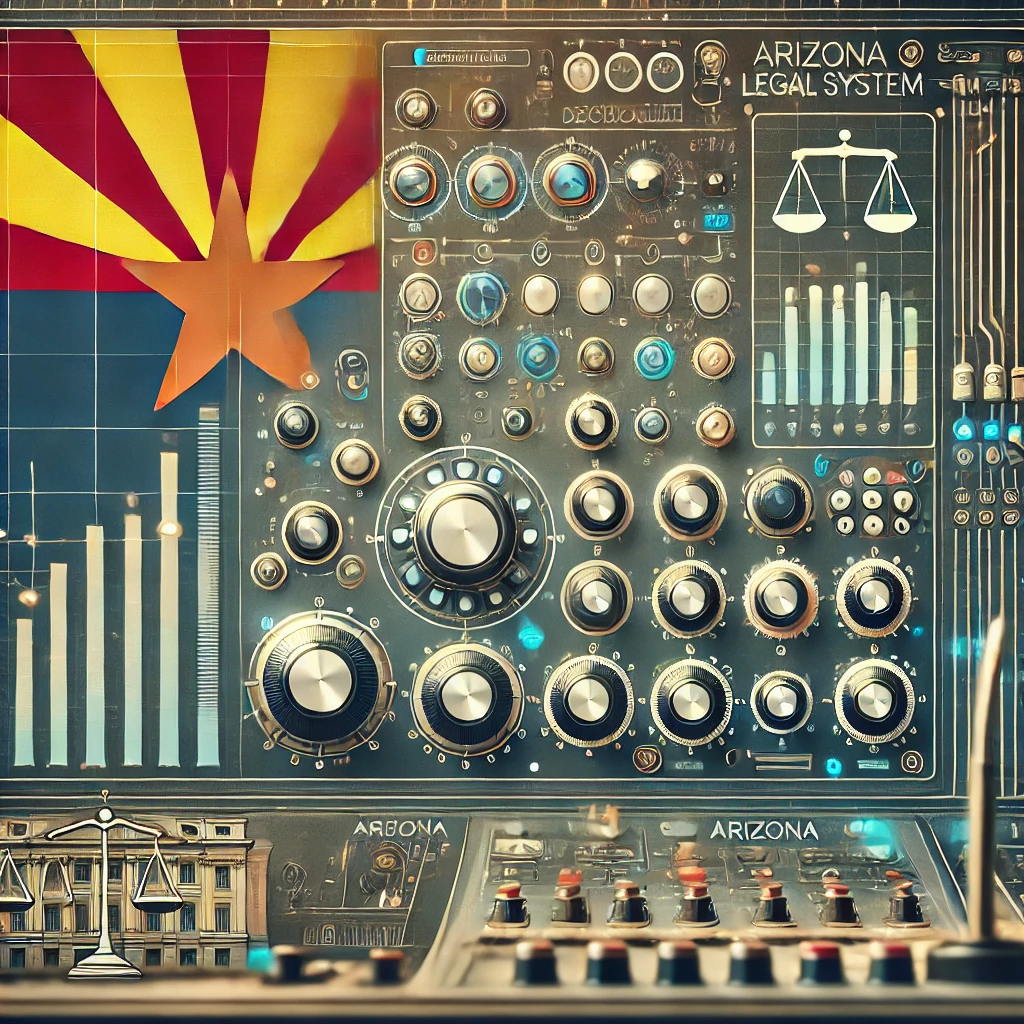Facing criminal charges can be an overwhelming and frightening experience. One of the most pressing questions you might have is about the potential penalties you could face if convicted. This blog post aims to provide a comprehensive overview of the potential penalties for various charges, with a focus on Arizona law. We will address the differences between felonies and misdemeanors, the goals and purposes of sentencing, the various sentencing options available to the court, and the concepts of mitigating and aggravating factors. Additionally, we’ll explore how felony history and the class of felony influence sentencing in Arizona.
Differences Between Felonies and Misdemeanors[1]
Felonies
Felonies are the most serious types of crimes, often involving significant harm to individuals or society. They carry severe penalties, which can include lengthy imprisonment, substantial fines, and long-term consequences such as loss of civil rights. Examples of felonies include murder, rape, armed robbery, and major drug offenses.
Misdemeanors
Misdemeanors are less severe offenses compared to felonies. They generally involve less harm or potential harm and carry lighter penalties. These penalties can include shorter jail time, smaller fines, and probation. Examples of misdemeanors include petty theft, simple assault, disorderly conduct, and minor drug offenses.
Goals and Purposes of Sentencing
Sentencing serves several goals and purposes within the criminal system, including:
– Retribution: Punishing the offender for the crime committed.
– Deterrence: Discouraging the offender and others from committing similar offenses.
– Rehabilitation: Helping the offender to reform and reintegrate into society.
– Protection: Protecting society from dangerous individuals.
– Restitution: Compensating victims for their losses.
The judge is tasked with determining what sentence best accomplishes the goals of sentencing based on the available options and the particular defendant’s circumstances. The less government involvement that judge thinks is necessary to achieve the goals of sentencing, the lighter the sentence will be.
Sentencing Options Available to the Court
Courts have several sentencing options available to them, depending on the severity of the crime and the specific circumstances of the case. These options include:
– Incarceration: Imprisonment in jail (for misdemeanors and short terms of incarceration as a condition of probation) or prison (for felonies).
– Fines: Monetary penalties paid to the state.
– Probation: Supervised release with certain conditions and restrictions.
– Community Service: Performing unpaid work for the community as a form of restitution.
– Restitution: Paying compensation to the victim for losses or damages.
– Rehabilitation Programs: Participation in treatment programs for substance abuse, mental health issues, or other problems.
Mitigating and Aggravating Factors
Mitigating Factors
Mitigating factors are circumstances that may reduce the severity of the sentence. These factors can include:
– Lack of prior criminal history
– Minor or no harm caused to the victim
– Acting under duress or coercion
– Showing remorse or taking responsibility for the crime
– Cooperation with law enforcement
Aggravating Factors
Aggravating factors are circumstances that may increase the severity of the sentence. These factors can include:
– Prior criminal history
– Use of a weapon during the commission of the crime
– Significant harm caused to the victim
– Committing the crime in a particularly cruel or heinous manner
– Lack of remorse or taking responsibility
Sentencing in Arizona: Felony History and Class of Felony
In Arizona in the context of felonies, two key variables determine how much time a person is facing once convicted: their felony history and the class of felony in question.
Felony History
Felony history refers to the number, nature, and age of prior felony convictions. This history helps determine whether the person is a repetitive offender or a non-repetitive offender. The key components of felony history include:
– Number of Convictions: How many prior felony convictions the person has.
– Nature of Convictions: What the prior felony convictions were for, and more importantly, what class of felony the prior conviction(s) was (were) for.
– Age of Convictions: How old the prior felony convictions are.
Based on these factors, a person’s prior convictions are categorized as historical or non-historical priors. This classification affects whether the person is deemed a repetitive offender and, consequently, the potential sentencing range.
Class of Felony
Arizona categorizes felonies into six classes, with Class 1 being the most severe and Class 6 being the least severe. The class of felony in question significantly impacts the potential penalties. For example:
– Class 1 Felony: Includes the most serious crimes such as murder, which can result in life imprisonment or the death penalty.
– Class 2 Felony: Includes crimes such as manslaughter, which carry lengthy prison sentences.
– Class 3-6 Felonies: Include a range of crimes with varying penalties, generally decreasing in severity.
Conclusion
Understanding the potential penalties for your charges is crucial for navigating the criminal system. The severity of the penalties depends on whether the charge is a felony or misdemeanor, the goals of sentencing, the available sentencing options, and the presence of mitigating or aggravating factors. In Arizona, your felony history and the class of felony are key determinants of your potential sentence.
If you or someone you know is facing criminal charges, it is essential to seek legal advice to understand the potential penalties and build a strong defense. For personalized legal advice and representation, contact me directly. As an experienced Arizona criminal defense attorney, I am dedicated to protecting your rights and providing the support you need. Reach out to my office today to discuss your case and explore your legal options.
[1] For more on the differences between felonies and misdemeanors, check out my previous post titled “What Is the Difference Between a Felony and a Misdemeanor?”

